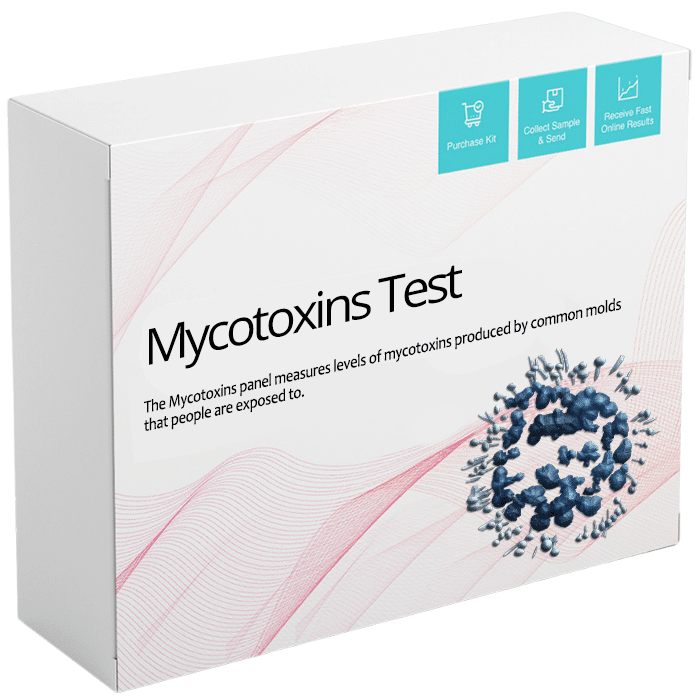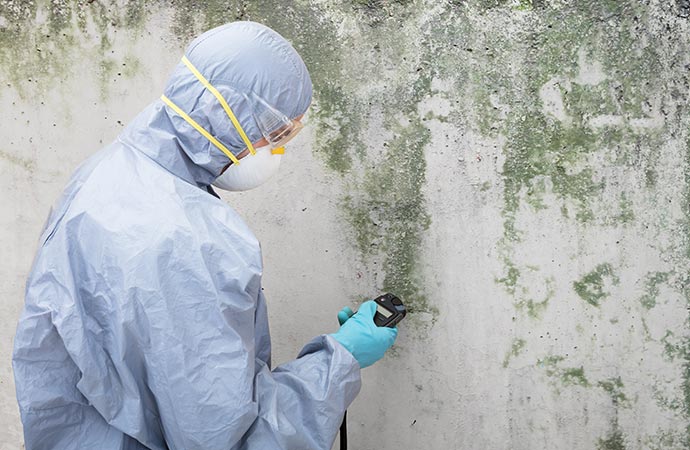The Duty of Mycotoxin testing Services in Food and Feed Security
The Duty of Mycotoxin testing Services in Food and Feed Security
Blog Article
Ensuring Compliance With Regulations: the Duty of Mycotoxin Examining in Quality Assurance
Making sure conformity with rigid laws is paramount for maintaining food safety, and the role of mycotoxin screening in quality control can not be overstated. Mycotoxins, harmful substances produced by particular mold and mildews, posture substantial health and wellness dangers, making their discovery important in food production. Adherence to regulative standards, such as those established by the FDA and EU, requires durable testing methods and technologies to determine and quantify these pollutants. By executing detailed screening methods, business can avoid potential wellness crises, prevent costly recalls, and preserve consumer trust fund. The complexities of these screening procedures elevate essential concerns about their efficiency and performance.
Recognizing Mycotoxins
Comprehending mycotoxins is essential to guaranteeing the quality and safety and security of agricultural products. Mycotoxins are hazardous secondary metabolites generated by certain varieties of fungis, typically discovered in foodstuffs such as grains, flavors, and nuts. These substances can occur at various stages of the food manufacturing process, from pre-harvest to storage space, and pose substantial wellness dangers to both humans and animals (Mycotoxin testing Services). One of the most notorious mycotoxins consist of aflatoxins, trichothecenes, ochratoxins, and fumonisins, each connected with details fungal species and ecological conditions.
The existence of mycotoxins in food products can bring about persistent and severe wellness concerns, including liver damage, immune suppression, and cancer causing impacts. Their detection and quantification are essential components of high quality control in agricultural and food industries. The intricacy of mycotoxin contamination necessitates a complex strategy, utilizing advanced analytical methods such as liquid chromatography, mass spectrometry, and enzyme-linked immunosorbent assays (ELISA) By recognizing the sources, kinds, and results of mycotoxins, stakeholders in the agricultural industry can better execute preventative steps and reduce risks, ensuring safer consumption for end-users. This understanding develops the bedrock whereupon reliable mycotoxin monitoring techniques are developed.
Regulatory Standards for Mycotoxins
Having established a foundational understanding of mycotoxins and their effect on food safety, it is imperative to review the governing criteria governing their presence in agricultural items. Governing criteria for mycotoxins are important due to the fact that they specify permissible limits, ensuring food security and safeguarding public health. Numerous international and nationwide firms have actually set these limits based on detailed risk evaluations.
The Codex Alimentarius Compensation, a global body established by the FAO and WHO, offers guidelines and optimum allowable degrees for various mycotoxins in food and feed. As an example, the Codex has set restrictions for aflatoxins in peanuts, maize, and dried out figs, among various other products. These standards are commonly taken on or adapted by private nations to fit their specific needs.
In the European Union, Regulation (EC) No 1881/2006 specifies optimum degrees for several mycotoxins, such as aflatoxins, ochratoxin A, and deoxynivalenol, in various food items. The U.S. Food and Medication Administration (FDA) has actually developed activity levels for mycotoxins like aflatoxins in products such as nuts and grains.
Adherence to these governing criteria is essential for preserving market gain access to, customer count on, and public health and wellness. Non-compliance can cause substantial financial losses and health risks, underscoring the value of stringent mycotoxin testing procedures.
Testing Approaches and Technologies

ELISA is extensively appreciated for its rapid and economical testing capacities, making it perfect for high-throughput settings. It counts on antibodies to find certain mycotoxins, supplying cause a fairly short time structure. Its sensitivity may be limited contrasted to a lot more innovative strategies.
HPLC, on the various other hand, masters offering measurable click site evaluation with high precision and accuracy. It separates intricate combinations right into private parts, making it highly efficient for identifying and measuring multiple mycotoxins all at once - Mycotoxin testing Services. This strategy, while much more lengthy and resource-intensive than Extra resources ELISA, uses a higher degree of integrity

LC-MS stands for the pinnacle of logical specificity and sensitivity. Integrating the separation power of liquid chromatography with the detection capabilities of mass spectrometry, LC-MS can find even trace degrees of mycotoxins. This approach is vital for verifying the presence of mycotoxins in regulative and forensic contexts, making certain conformity with stringent safety and security requirements.
Carrying Out Evaluating Procedures

Incorporating these advanced testing methods right into a comprehensive quality assurance structure demands a well-structured approach to executing screening procedures. To accomplish this, companies need to initially carry out an extensive threat analysis to determine potential mycotoxin contamination factors within the supply chain. This assessment educates the growth of a customized testing strategy that deals with specific vulnerabilities.
Following, developing standard tasting treatments is vital. Consistent sampling guarantees that examination results are reliable and rep of the whole batch (Mycotoxin testing Services). Sticking to standards from governing bodies, such as the FDA or EFSA, aids maintain conformity and enhances the trustworthiness of the testing process
Training workers is an additional essential part. Personnel must excel in both example collection and the procedure of screening devices. Regular training sessions and qualification programs can guarantee that group members remain updated with the most up to date techniques and regulative changes.
Advantages of Mycotoxin Examining
Mycotoxin screening offers many advantages that substantially boost the safety and high quality of food and feed items. Mainly, it serves as a vital control step to stop he has a good point infected products from reaching the customer market, consequently guarding public wellness. By recognizing and measuring mycotoxins such as fumonisins, aflatoxins, and ochratoxins, producers can make certain that their products fulfill stringent governing standards, thus avoiding potential lawful consequences and linked expenses.
Additionally, mycotoxin screening adds to the economic viability of food and feed sectors by lessening the risk of large item recalls. The capacity to discover and isolate infected batches early in the manufacturing procedure decreases waste and prevents the monetary losses linked with damaged brand name credibility. It fosters customer trust and loyalty, as clients are significantly aware of food safety issues and demand higher top quality requirements.
The implementation of regular mycotoxin screening also promotes finest methods within farming and manufacturing sectors. By sticking to rigorous testing methods, business can optimize their high quality control procedures, boost functional effectiveness, and guarantee the constant manufacturing of risk-free, top notch items. To conclude, the benefits of mycotoxin testing are complex, adding to public health and wellness, economic stability, and sector honesty.
Verdict
Mycotoxin testing is essential in ensuring compliance with regulative standards, thus preserving food safety and quality control. By systematically detecting dangerous mycotoxins, this method helps minimize wellness dangers, protect against legal repercussions, and stay clear of economic losses connected with item recalls. Applying robust screening protocols promotes customer count on and confidence in food safety and security practices, ultimately supporting the honesty and credibility of food organizations. Therefore, mycotoxin screening continues to be an indispensable element of modern-day food safety monitoring systems.
Making sure conformity with rigorous regulations is critical for maintaining food safety and security, and the function of mycotoxin testing in quality control can not be overemphasized.In the realm of mycotoxin testing, advanced techniques and modern technologies are crucial in ensuring food safety and regulatory compliance.Mycotoxin testing uses many advantages that dramatically boost the safety and quality of food and feed items.Mycotoxin screening is critical in ensuring compliance with regulatory standards, therefore keeping food safety and security and top quality control. Therefore, mycotoxin screening remains an important part of modern-day food security administration systems.
Report this page